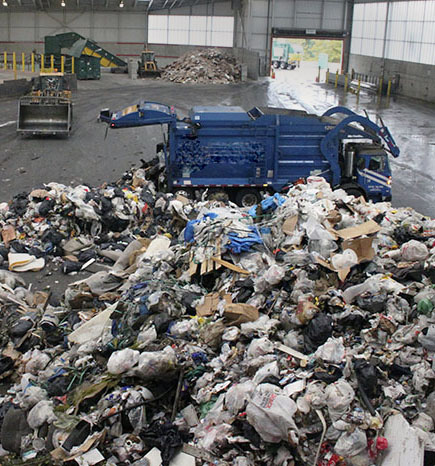“…no segment of the population should, because of its racial or economic makeup, bear a disproportionate share of risks and consequences of environmental pollution or be denied equal access to environmental benefits.”
CT DEEP’s Environmental Equity Policy, 1993
Story and Photographs
By John Murray
The permitting process to allow F&G to operate a garbage plant in the South End of Waterbury has not met the legal outreach requirements that protect a distressed Hispanic population living within a half mile of the facility.
Odor and trucks are the hot button issues for the general public, but a little known regulation – the Connecticut Environmental Justice Law – might upend F&G’s dream of garbage expansion in Waterbury.
Environmental justice communities in the state are identified by the Connecticut Department of Economic Community Development (DECD) by compiling statistics on unemployment, poverty, aging housing stock, declining rates of job growth, population and per capita income to rank all 169 municipalities in Connecticut. The 25 municipalities with the worst results are labeled distressed communities.
Waterbury is #3 on the distressed municipality list behind New London and Ansonia. When a municipality is distressed it gains additional protection as an “environmental justice community”, and companies seeking permits for waste incinerators, sewage treatment plants and waste processing plants have to meet strict legal requirements to fully engage with local residents.
Sharon Lewis is the executive director of the CT Coalition for Environmental Justice and she spoke at a forum on Environmental Racism in West Hartford on June 5th. “People of color are targeted with toxic dumps and incinerators,” she told the audience. “Decision makers avoid opposition by going to places where there is no political power, and where there is limited knowledge of the dangers. Marginalized communities are not included at the table and there are shovels in the ground before anyone knows what’s going on.”
According to Connecticut statute 22a-20a, a company applying for a waste permit in an environmental justice community has to…
• Post a reasonably visible sign, printed in all languages spoken by at least twenty per cent of the population that reside within a one-half of a mile radius of the proposed or existing facility, in accordance with local regulations and ordinances
• Notify neighborhood and environmental groups, in writing, in a language appropriate for the target audience
• Not less than ten days prior to the informal public meeting and not more than thirty days prior to such meeting, the applicant shall publish the date, time and nature of the informal public meeting with a minimum one-quarter page advertisement in a newspaper having general circulation in the area affected, and any other appropriate local newspaper serving such area, in the Monday issue of a daily publication or any day in a weekly or monthly publication.
• Any municipality, owner or developer may enter into a community environmental benefit agreement in connection with an affecting facility. Mitigation may include both on-site and off-site improvements, activities and programs, including, but not limited to: Funding for activities such as environmental education, diesel pollution reduction, construction of biking and walking trails, staffing for parks, urban forestry, support for community gardens or any other negotiated benefit to the environment in the environmental justice community. Prior to negotiating the terms of a community environmental benefit agreement, the municipality shall provide a reasonable and public opportunity for residents of the potentially affected environmental justice community to be heard concerning the need for, and terms of, such agreement.
The last bullet point about a Community Environmental Benefit Agreement is not required by law, and Waterbury Corporation Counsel Linda Wihbey said the subject never came up during talks with F&G, but perhaps it should have. The first three bullet points are specific legal requirements that were not documented in F&G’s Environmental Justice Participation Plan submitted to Edith Pestana, the administrator of the Environmental Justice Program at the Connecticut Department of Energy and Environmental Protection (DEEP).
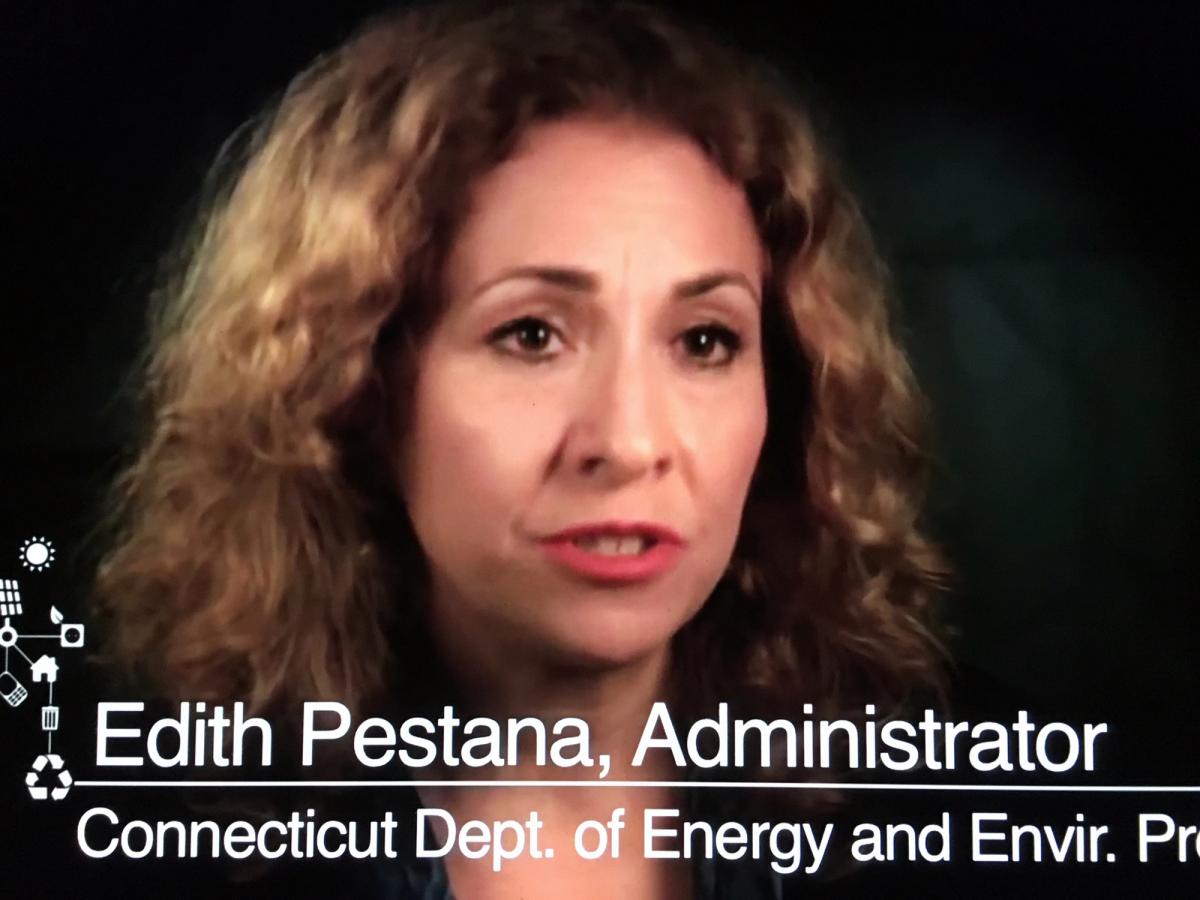
Pestana approved the F&G document created by Anchor Engineering of Glastonbury, and said she was unaware that there had been no direct outreach into the distressed Hispanic community.
“This has never happened before,” she said. “99% of the companies that file these reports have done everything they are supposed to,” Pestana said. “Companies are looking to have a good relationship with the community. F&G’s report looked like there had been considerable public participation, so I approved it.”
There was public outreach by F&G to engage Waterbury’s neighborhood associations when they invited 25 groups to a meeting inside Waterbury City Hall on February 1, 2017. Nine groups showed up, including Waterville, Country Club, Lakewood, Hillside, and Overlook, none of which would be directly impacted by the trucks and odor from the garbage transfer station. Hopeville and Gilmartin groups were also in attendance. The South End Neighborhood Association is in the middle of the Hispanic population and was invited to the informational meeting, but the group was in limbo and did not attend. By law the burden of connecting with the Hispanic population was on F&G, and there was no outreach in Spanish to the population that would be most impacted by the garbage facility.
State Representative Geraldo Reyes Jr. lives in the South End and was never directly contacted by F&G (although State Representative Anthony D’Amelio who represents Town Plot and Middlebury was invited to a public forum by registered mail). Reyes found out through word of mouth about the public forum and attended.
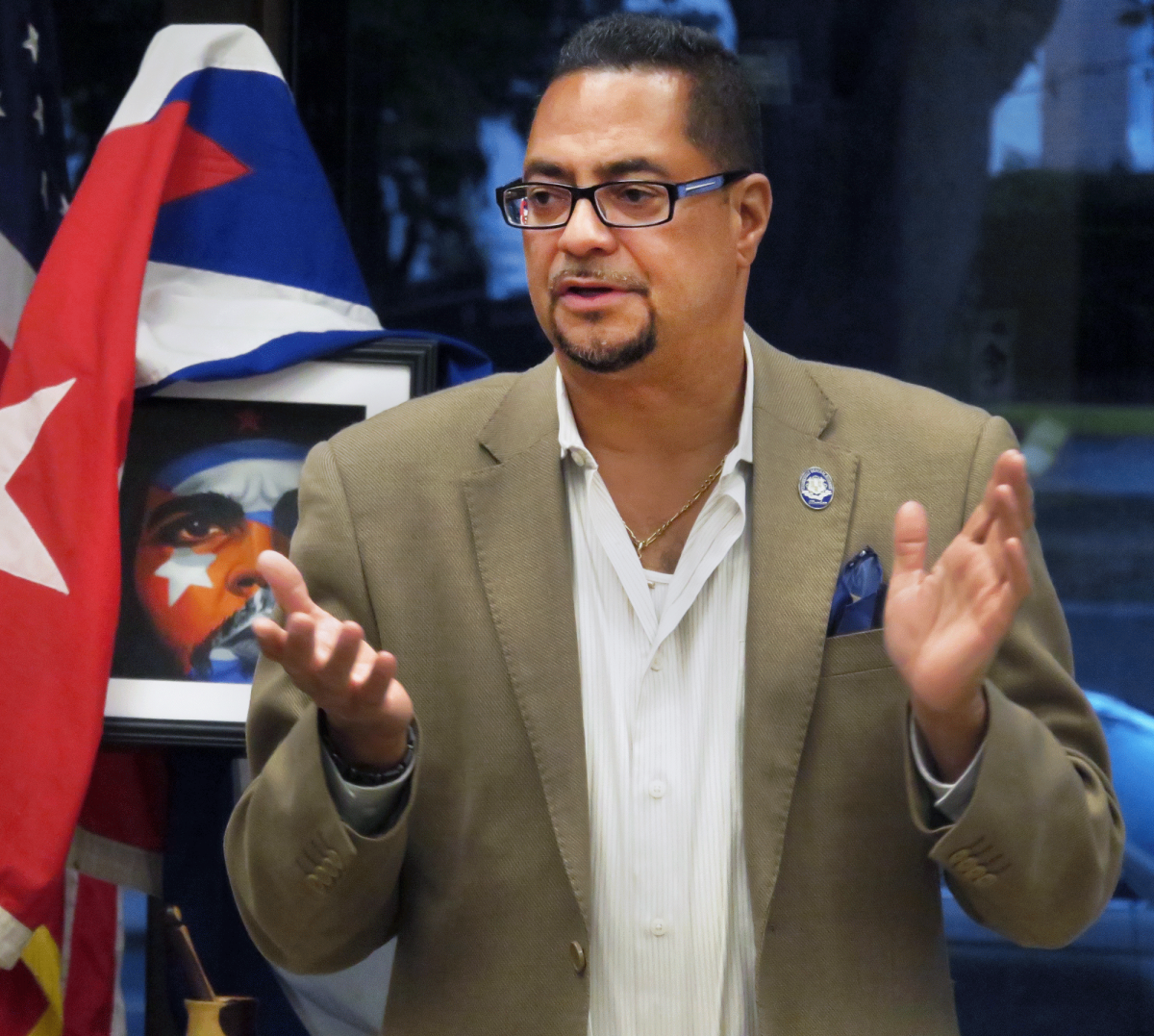
State Representative Geraldo Reyes Jr.
“F&G did not reach out to the Hispanic community and explain their project,” Reyes said. “F&G did not explain to the Hispanic community that hundreds of tons of garbage and more than 100 garbage trucks would be coming into their neighborhood every day. The Railroad Hill property is just on the other side of the Naugatuck River from the largest Hispanic population in the city, and we were left out of the discussion.”
Why does that matter? It matters because it’s the Hispanic population that will be most impacted by the trucks, odor and diesel fumes, and they already breath some of the most polluted air in the state of Connecticut.
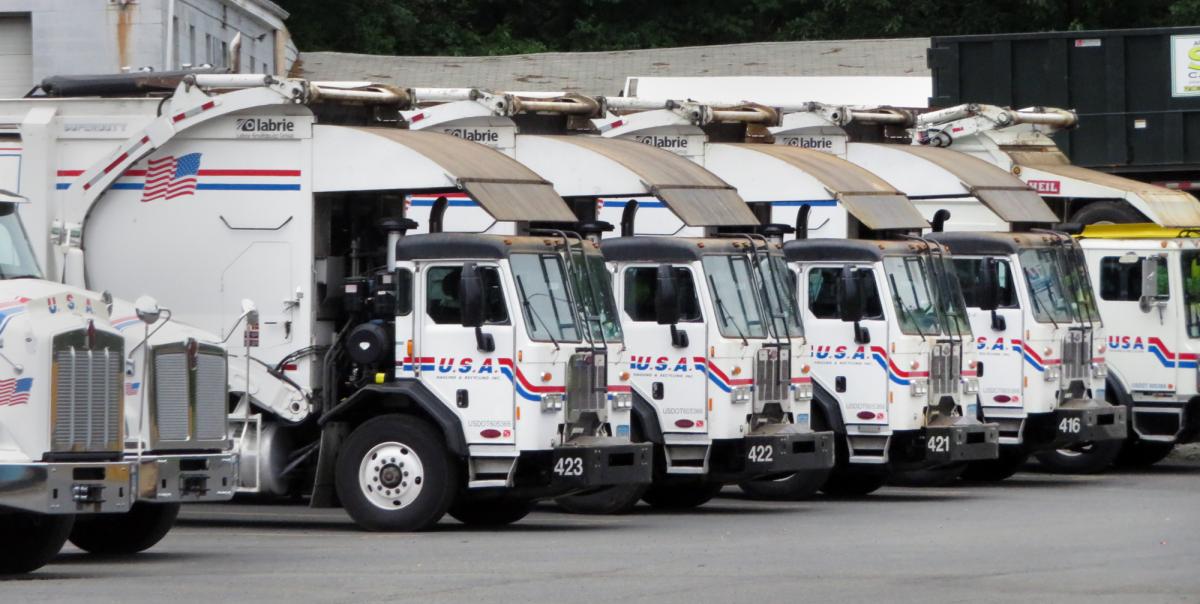
According to an air quality report compiled by New York University, New Haven County has the highest annual mortality rate in the state from air pollution with a death rate of 54.9 people per year. Fairfield County has an annual mortality of 47.9 per year and Hartford County’s rate is 30.5 deaths per year. The state of Vermont has one death per year from air pollution.
In April the American Lung Association’s 2018 State of the Air report found that the air in Connecticut ranked among the worst of any area east of the Mississippi.
Steve Schrag lives in the Gilmartin neighborhood and is the chairman of the Environmental Commission in Waterbury. Schrag spoke before the Zoning Commission in April and cited data from an Environmental Protection Agency program called Toxics Release Inventory (TRI) Program. Schrag said, “Nearly 10% of all the air pollution in Connecticut comes from one zip code, 06706 – the South End of Waterbury.”
Sophia Weber is a chemical engineer at the University of New Haven and has been conducting air quality tests throughout Waterbury using an AirBeam air monitor. The device is an EPA-accredited air-monitoring tool developed for the use of researchers and citizen scientists. The device measures fine particulate matter 2.5 micrometers wide, which Weber said creates havoc when a particulate that size gets into the deepest recesses of the lungs. Weber is involved with the Waterbury Mutual Aid and Defense Network and said the AirBeam results have fluctuated wildly, largely depending on weather.
Results of 35 micrograms per cubic meter were problematic, Weber said, and she had recorded readings on hot, muggy days of 235 micrograms per cubic meter. “Readings that high,” Weber said, “are extraordinarily bad.”
Why is air quality an issue in F&G’s permit process? Because the daily addition of 61 diesel trucks making round trips through a distressed community will add more toxins into the air in a community already afflicted with alarming asthma rates.
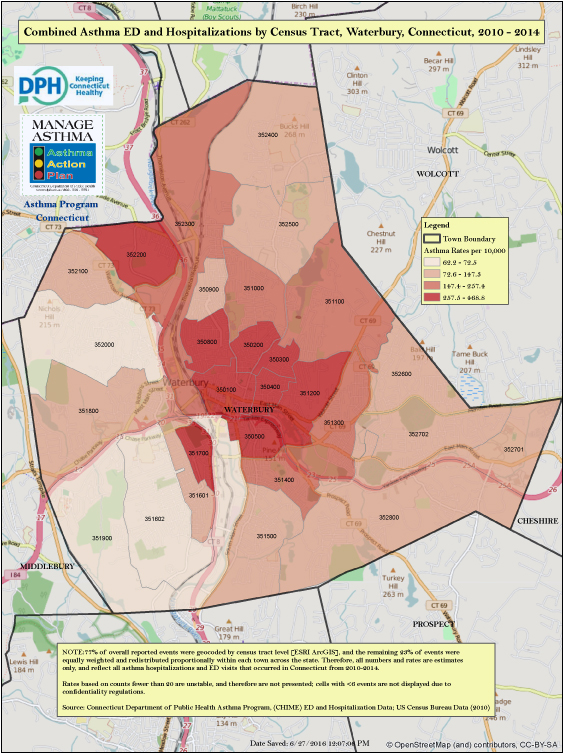
The dark shade reveals extremely high asthma rates in Waterbury.
The Connecticut Public Health Asthma Program documented that from 2010 to 2014 that Waterbury has the most asthma related visits to an emergency room in Connecticut, and the 4th highest number of asthma related hospitalizations.
A 2014 report issued by the Connecticut Department of Health states that, “Hispanic students (17.2%) and non-Hispanic black students (16.7%) had significantly higher rates of asthma when compared to non-Hispanic white students (11.2%).”
Which is why the Environmental Justice Program is so important. Sharon Lewis of the CT Coalition for Environmental Justice said that three out of every five African-Americans live near toxic dumpsites and that blacks and Hispanics are considered marginalized collateral damage.
“Race is a determining factor where these facilities go,” Lewis said. “The decision makers need to be concerned about the health of people of color.”
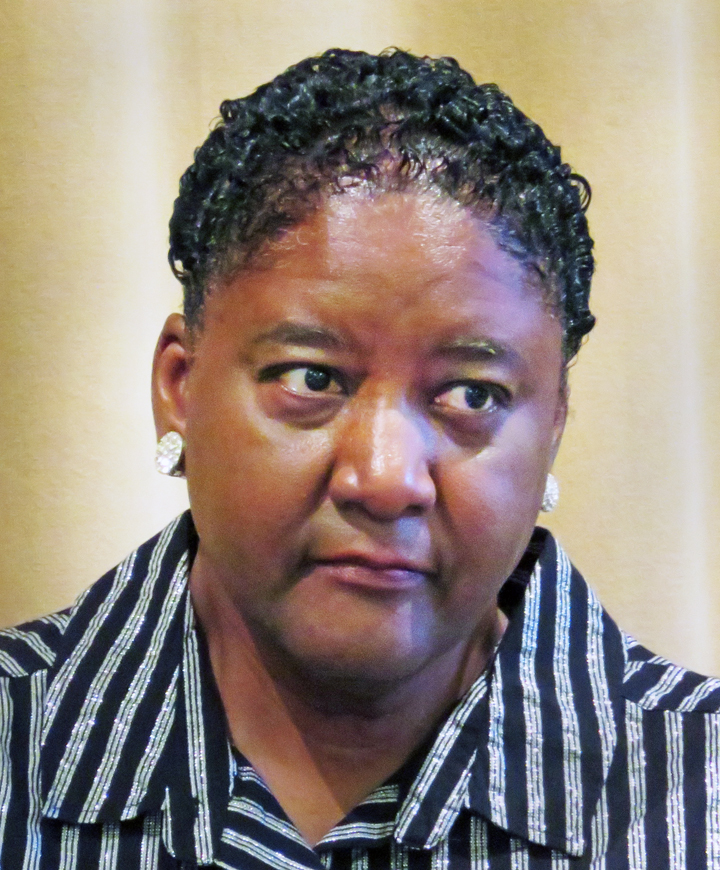
Sharon Lewis of the CT Coalition for Environmental Justice.
Lewis used to work in the corporate world and traveled extensively around America. “I used to tell the taxi driver to take me to where the black people live,” Lewis said. “Now I tell the taxi driver to take me to the land fill or the trash incinerator, because that’s where the black people live.”
Alex Rodriguez was a panelist at the forum on Environmental Racism on June 5th in West Hartford. Rodriguez is a student at Central Connecticut State University and a CHISPA community organizer.
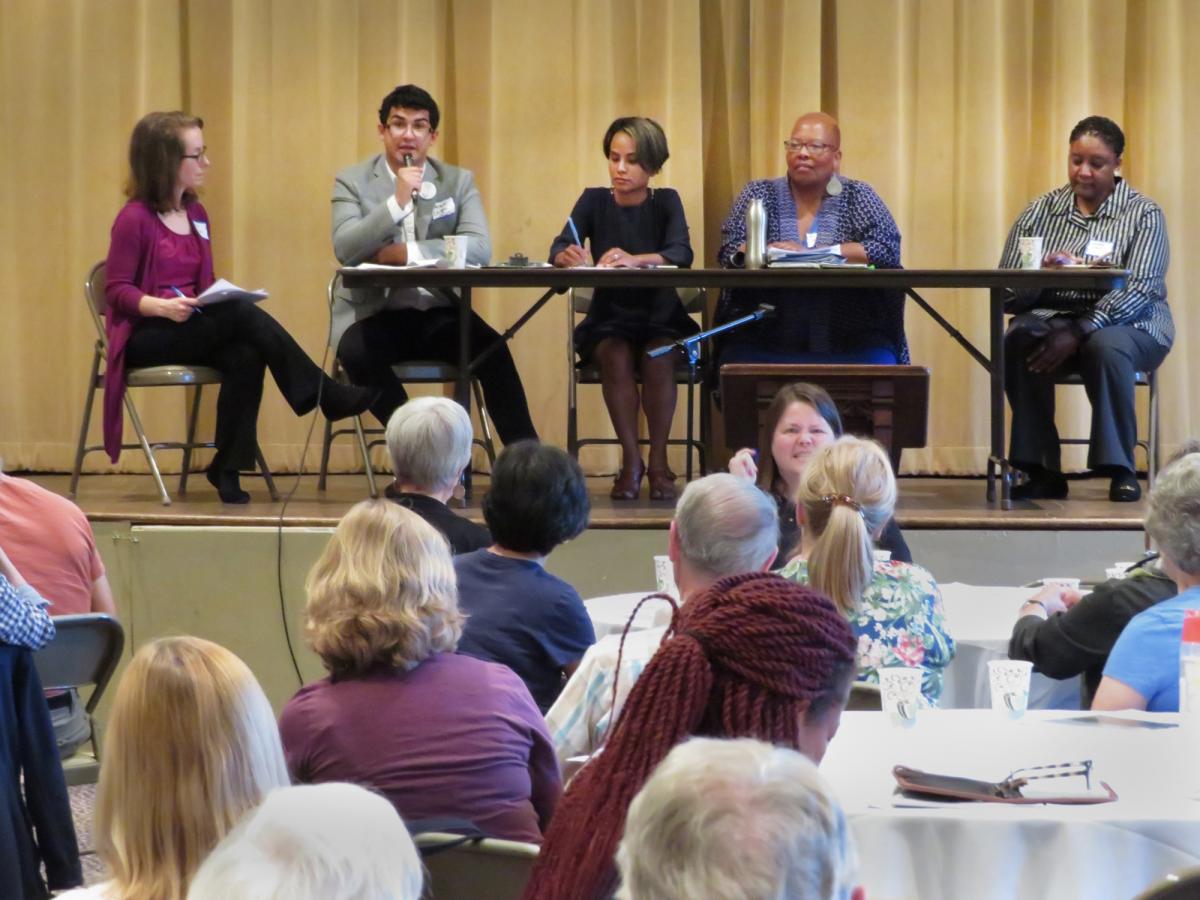
Alex Rodriguez addressing the crowd during the forum on Environmental Racism.
“I don’t want to live in a world where people’s health is determined by where people live,” Rodriguez said. “I want to stand up for black and brown kids.”
The F&G public participation plan has no data showing it made the “meaningful” effort required by law to engage the most affected residents in the environmental justice community.
The poor and largely Hispanic population in the South End of Waterbury was not engaged in the process. The burden of making that outreach and connection is solely the responsibility of the business seeking a permit in an environmental justice community.
It is the responsibility of the Environmental Justice administrator at DEEP to have thoroughly vetted F&G’s public participation plan. When the Waterbury Observer contacted Edith Pestana and informed her that the distressed residents in the South End of Waterbury had not been engaged in the process, and had not been protected by the environmental justice program she ran, she was shocked.
“If I had known we could have solved this issue by setting up a few meetings in churches in the South End,” Pestana said. “I wish the community had reached out and let me know this.”
When asked how she could place the burden on the vulnerable community it was her job to protect, Pestana said, “the Environmental Commission in Waterbury usually communicates very well with me. Steve Schrag knows me, Larry De Pillo knows me. I didn’t hear anything about the lack of Hispanic outreach. This has never happened before.”
Pestana said there had been substantial reductions at DEEP and she relies heavily on feedback from the community to address deficiencies in public participation. “The community needs to reach out,” she said. “I need to hear from the people. I’m telling you the truth, I can’t do it all myself.”
State Representative Geraldo Reyes is a member of the Environmental Committee in Hartford and utilized environmental legal counsel and his legislative aides to research environmental justice law. Reyes said F&G was legally required to engage the Hispanic community, and they missed the target.
“As a lifelong stakeholder in the South End it’s unfair to continue to ask the taxpayers from the South End to house the majority of the city’s toxins,” Reyes said. “When is enough, enough?”
The Environment
As part of the F&G’s Environmental Justice Public Participation Plan the company is required to reach out and directly engage environmental groups, and there is no data in their report that they did so. Kevin Zak lives less than a mile south of the proposed facility, and is the president and founder of the Naugatuck River Revival Group.
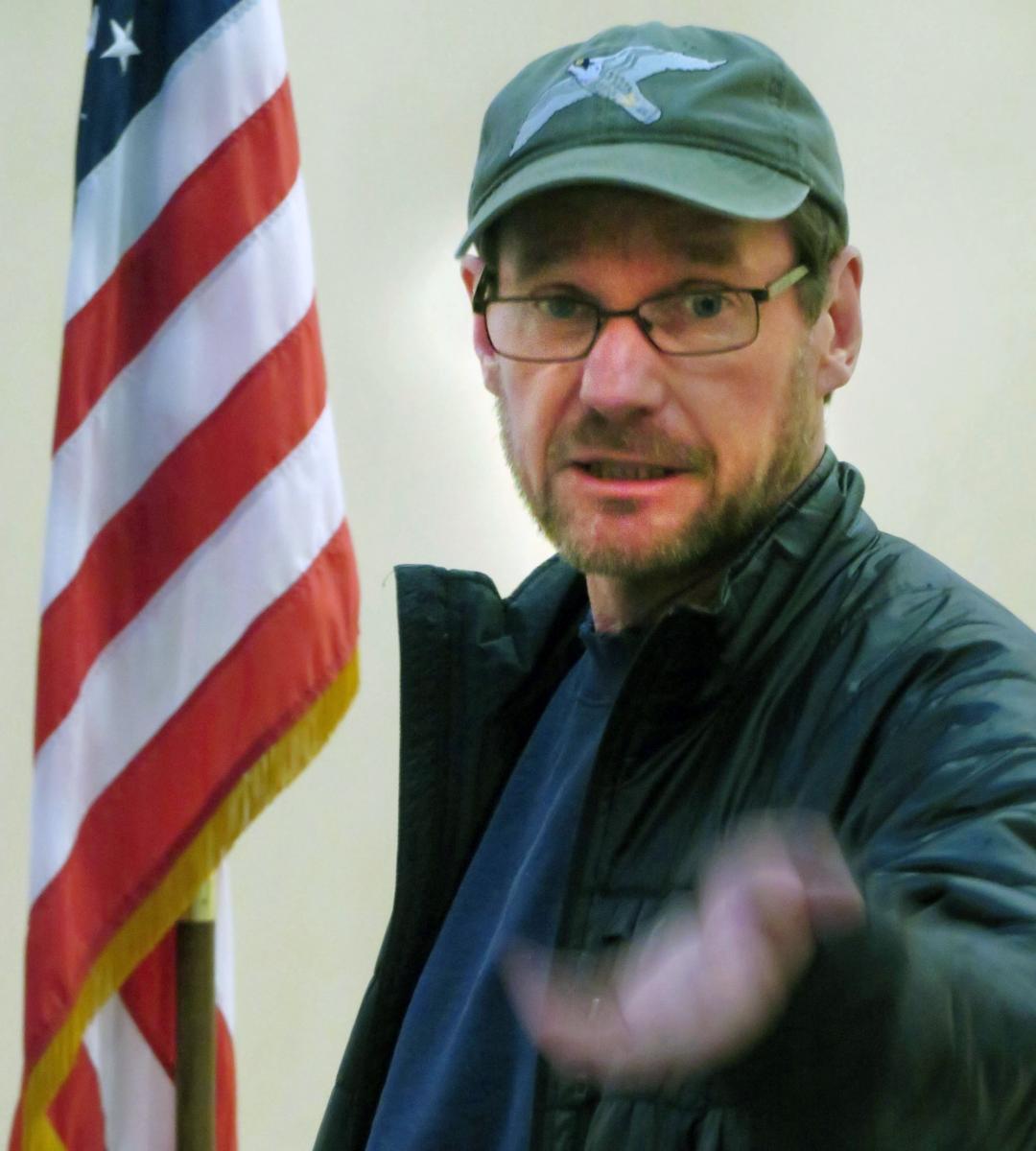
Environmental crusader Kevin Zak of the Naugatuck River Revival Group.
Zak is also a member of the Waterbury Greenway Committee, and the 40-mile Naugatuck River Greenway Committee, and has multiple concerns about the F&G proposal.
When contacted, Zak didn’t mince words. “You can’t have garbage trucks driving back and forth right next to the greenway,” he said. “It will kill the quality of life experience for users of the greenway.”
Zak said F&G and traffic studies failed to factor in the “economic externality” of the project, which is a consequence of an economic activity experienced by an unrelated third party. Externality can be either positive or negative to a project. In this case F&G’s project would have a negative impact on the greenway project.
“They don’t see houses along that stretch of South Main Street so they’ve concluded the trucks will not have a negative impact,” Zak said. “That’s convenient for them, but they didn’t put all the factors in the equation, and that’s why we keep getting in trouble down the road. This will kill the greenway with noise and diesel fumes and nobody has even talked about that.”
Another factor in the state’s Environmental Justice Program is to ensure distressed environmental justice communities have equal access to the environment,
“Won’t the garbage trucks create a barrier between the Hispanic community in the South End and the greenway?” Zak said. ”What happens when a kid gets hit by a garbage truck while crossing South Main Street to get to the greenway?”
Zak is outspoken and passionate about the Waterbury Greenway, but he is furious about an F&G facility at 184 Municipal Road in Waterbury, a half mile south of the F&G’s proposed waste transfer station at 260 Railroad Hill.
In F&G’s Environmental Justice Public Participation Plan they were asked if they had any violations at other facilities that they operated. They answered no, which Zak said is not true.
After a decade of plucking garbage and debris from the Naugatuck River, Zak has begun legal proceedings against F&G for being a serial polluter of the Naugatuck River watershed.
“I’m suing because I’m angry,” Zak said. “I’ve been picking up their garbage for years. This has to stop.”
Zak first became aware that the F&G facility at 184 Municipal Road in Waterbury was a problem while he was participating in an Earth Day cleanup in May 2017 with members of the Waterbury Greenway Committee.
The F&G facility is on a slope and whenever it rains water flows through mounds of construction debris, down a driveway, across Municipal Road, down a steep embankment and into the Naugatuck River.
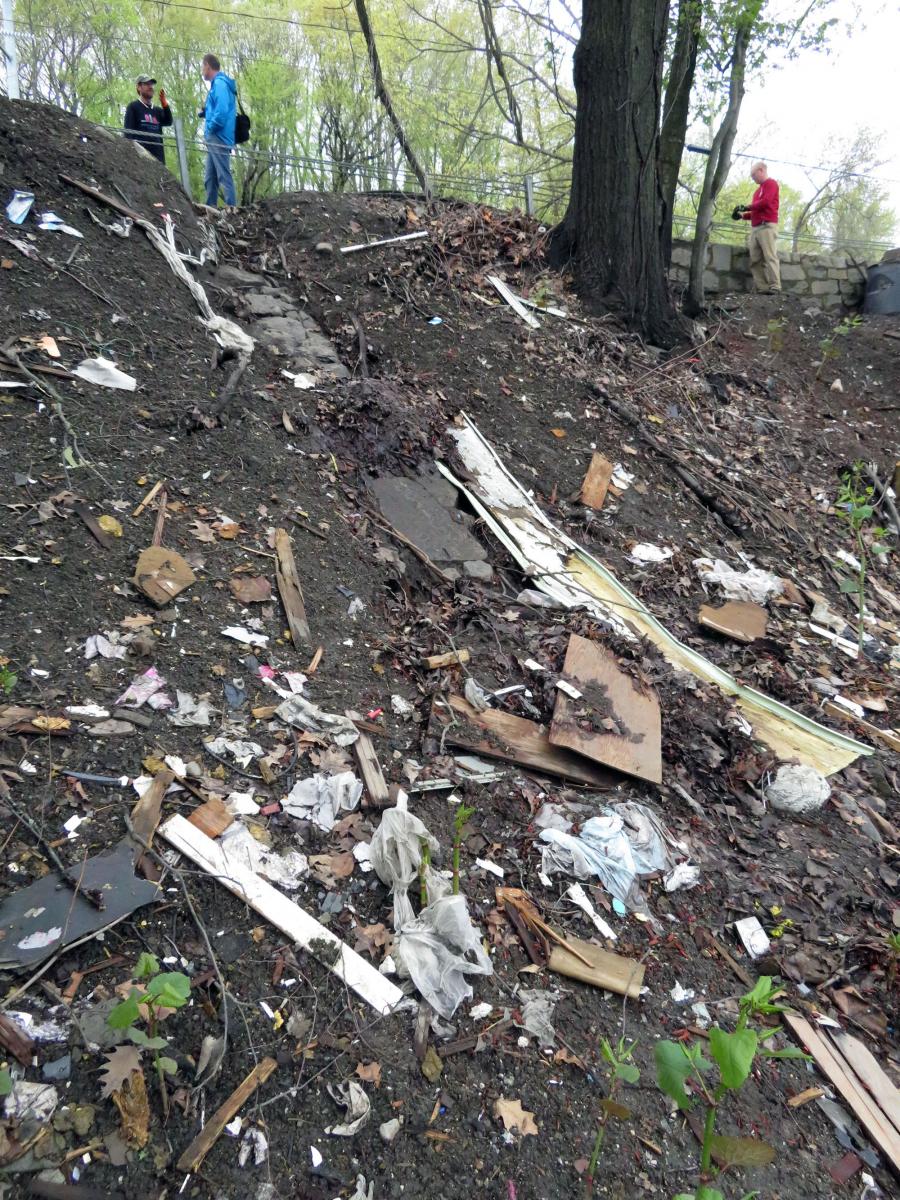
F&G debris tumbling towards the river at 184 Municipal Road.
“How is this facility allowed to operate with such obvious design flaws?” Zak asked. “You don’t need to be an engineer to realize common sense is missing in their design.”
Zak sent a letter last week to Frank and Gerald Antonacci to formally announce his intent to sue the F&G owners under the Federal Clean Water Act, the Resource Conservation and Recovery Act and Connecticut General Statues.
Additionally Zak intends to sue the various companies that the Antonacci brothers do business under; Municipal Road Transfer Center LLC, 260 Railroad Hill LLC, F&G LLC, USA Hauling and Recycling Inc., All American Waste LLC, and Murphy Road Recycling LLC.

Zak spent a day examining records about F&G at DEEP HQs in Hartford.
Zak spent a day inside DEEP headquarters last week investigating the various companies that have done business at 184 Municipal Road and discovered violations at the facility that stretched back two decades.
“The companies owned by Frank and Gerald Antonacci have been polluting the Naugatuck River since 1997 and neither DEEP or the EPA has done much to stop them,” Zak said. “That is why I began legal action. They have not been good neighbors to the community.”
Timeline
Waterbury Mayor Neil O’Leary said he’d never heard of F&G before his economic development coordinator, Joe McGrath, told him in 2015 that the company wanted to expand its facility on Railroad Hill Street and change from sorting construction and demolition material, to municipal waste (the stuff in your garbage plan).
“I was dead set against it,” O’Leary said. “The idea didn’t meet the vision we have for the South End of Waterbury, and I was not going to support it.”
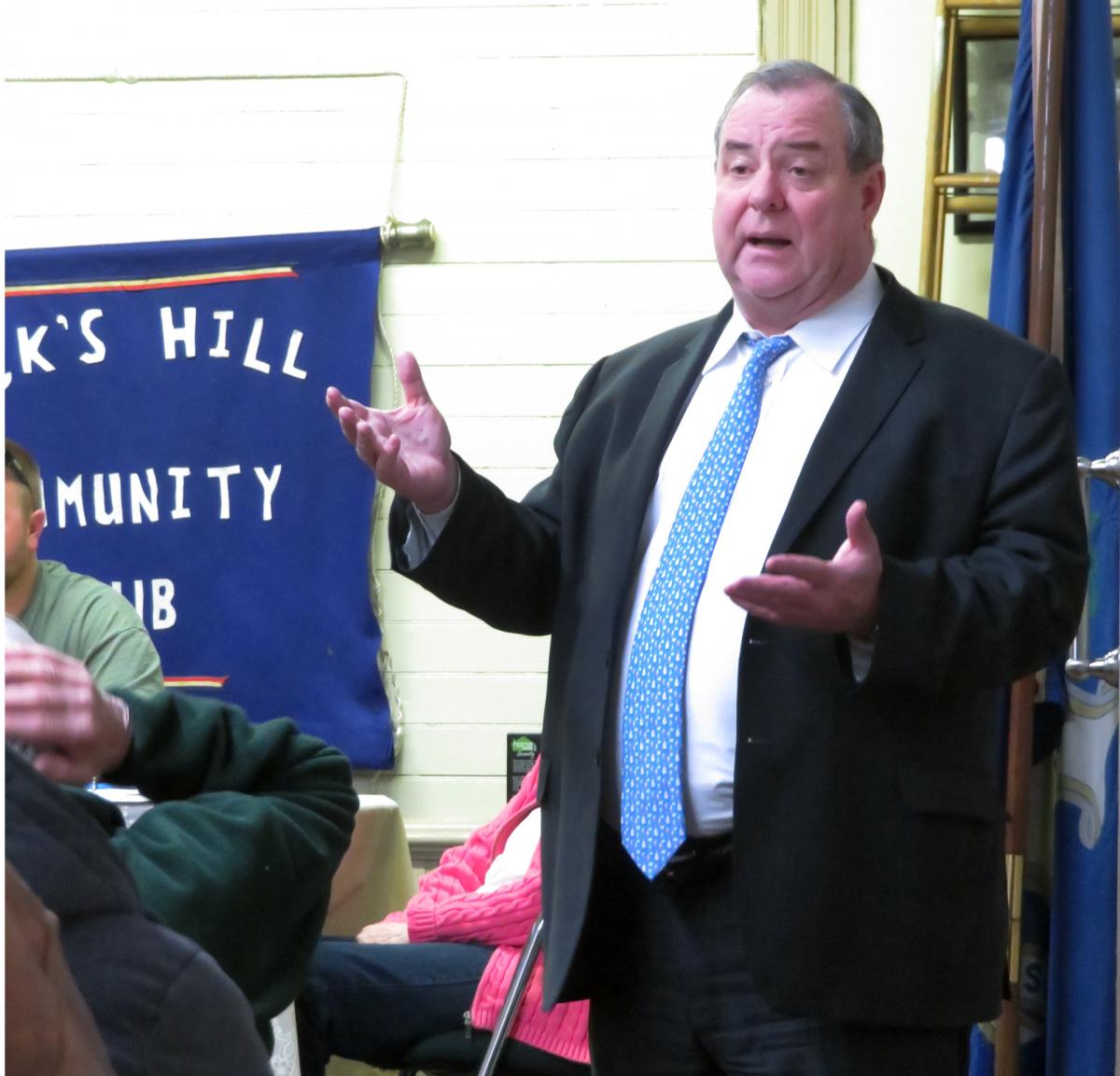
Mayor Neil O’Leary has been an outspoken opponent of F&G’s garbage project.
O’Leary said he stayed quiet and let the proposal work itself through the Waterbury Zoning Board. In February 2017 a hornet’s nest of concerned citizens spoke before the Zoning Commission and raised enough quality of life issues that the commission eventually voted 5-2 to deny F&G’s application to expand their hauling permit from 100 tons a day, to 700 tons a day, and to include household waste. The residents’ concerns about odor in the South End and trucks filled with waste driving through residential neighborhoods and along a proposed greenway were enough to torpedo the project.
Steve Schrag asked who would monitor the trucks, and who would keep the trucks out of the neighborhoods? Schrag stated that the F&G operation is a combination of seven different limited liability corporations. “Where does the buck stop if there is a problem,” Schrag asked. “Who do we hold accountable?”
Mayor O’Leary also stepped into the fray and loudly voiced his opposition.
“Wrong place, wrong time, and wrong message to send to the residents in the South End of the city,” O’Leary told The Waterbury Observer in February 2017. “We are working hard to improve the quality of life in the South End, and municipal waste is not part of that vision.”
F&G representatives did attempt to address community concerns and met with members of the Waterbury Neighborhood Council 15 months ago inside Waterbury City Hall to answer questions. At that meeting Attorney Michael Tansley, representing F&G, said the “odor and traffic issues were very manageable and there would be no impediment to neighborhoods and city roads.”
Tansley said the project could generate five to ten new jobs and would result in increased tax revenue, and cost savings for Waterbury. F&G was asked by the city to pay for an odor study on the project and Tansley said the study concluded that the odor would only be detectable a “couple times a year.”
The odor study was prepared by TRC of Windsor, CT, and a draft report concluded that if F&G implemented ten additional steps to its plan that the facility “would not be expected to create an odor nuisance, except possibly in unusual circumstances.”
Any circumstance was unacceptable to Mayor O’Leary.
“What if that certain day is July 4th or Memorial Day?” O’Leary asked back in 2017. “Any day is unacceptable in an area that already has issues with odors from the waste water treatment plant. More odor in the South End is not fair, and it is not right. Any odor is too much.”
Edith Pestana from DEEP said the F&G permitting process has been highly unusual in Waterbury from the beginning. “The process has been hostile for two years,” Pestana said, “and I’m not sure why.”
Perhaps the tension came from the fierce opposition F&G encountered from City Hall, the Zoning Commission, neighborhood groups and community leaders. Waterbury clearly does not want a waste transfer station in the South End of the city.
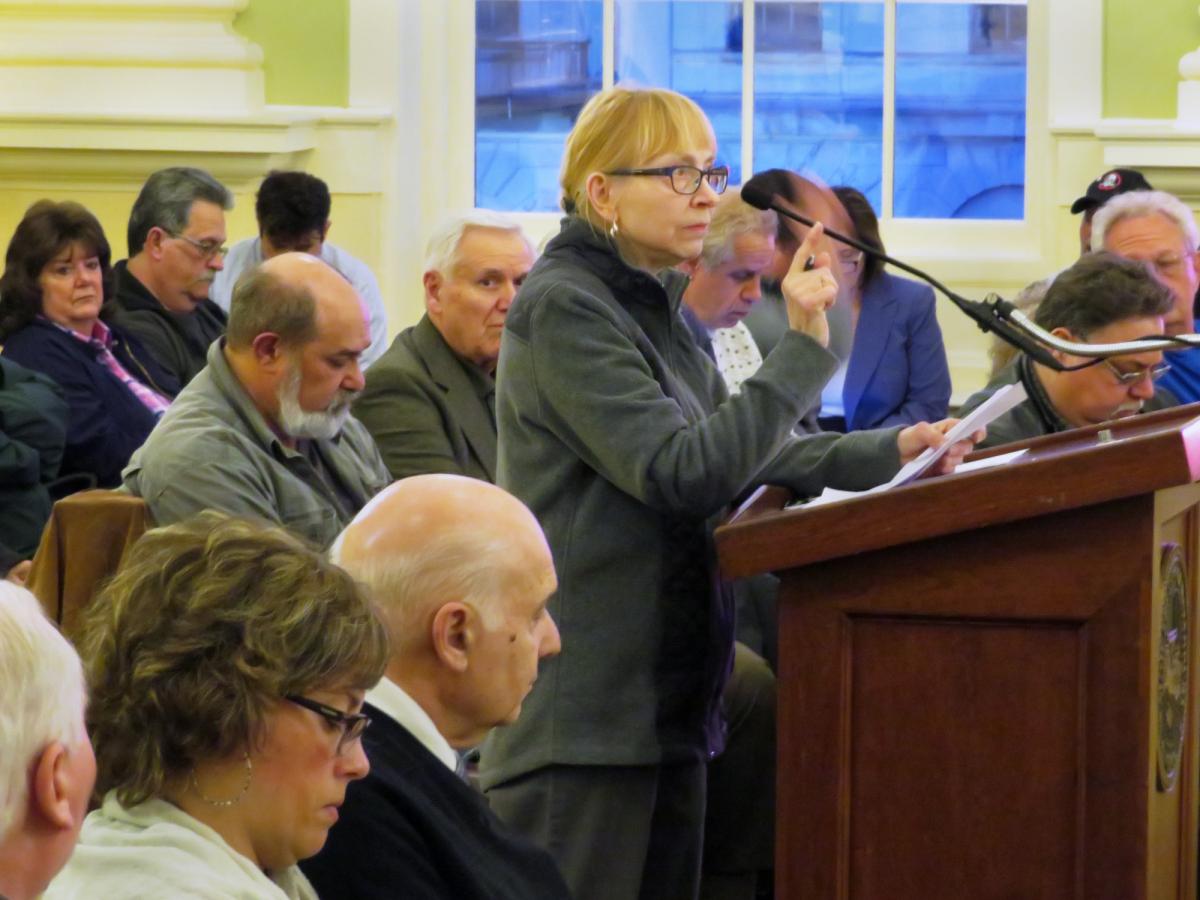
Sharon Samoska and dozens of other citizens spoke out against F&G’s plans.
After the Zoning Commission rejected F&G’s expansion project, F&G sued and the city began negotiations with the company in Superior Court. Corporation Counsel Linda Wihbey said the city was in a bind because two independent consultants hired by the Zoning Commission had found there would be no negative impact from odor or traffic. “The Zoning Commission’s decision was not supported by our own experts,” Wihbey said. “That was a problem for us if the case went to trial.”
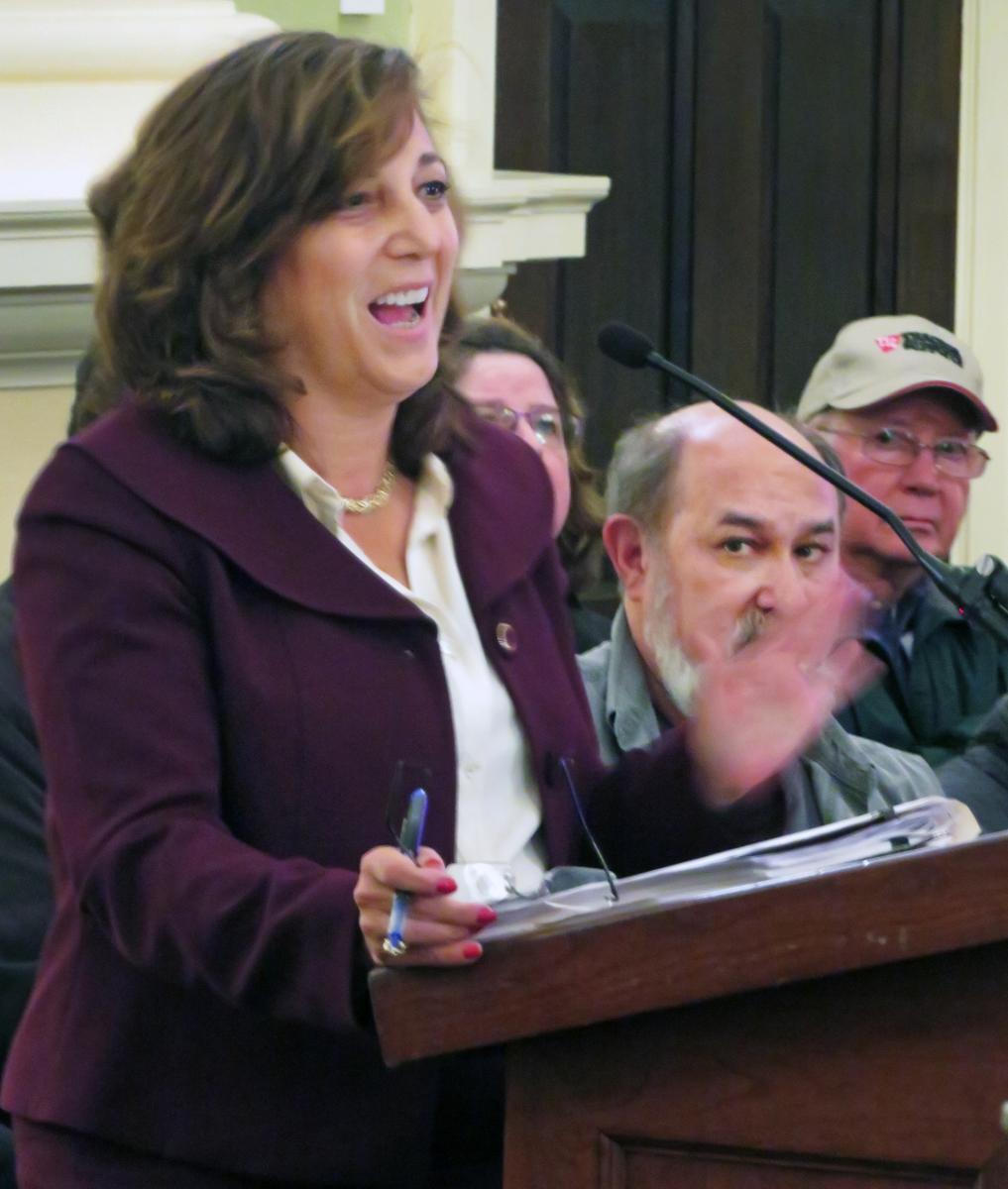
Corporation Counsel Linda Wihbey.
The city could have fought F&G and taken the lawsuit to court, but if the city lost, F&G would have a permit to haul 700 tons of municipal waste a day, and there would be 140 garbage trucks coming and going from the facility.
“I was between a rock and a hard place,” O’Leary said, “so we agreed to a settlement that would cut the amount of tons per day from 700 tons to 350 tons, and reduce the trucks from 140 to 61. I have a history of not settling lawsuits, but the stakes were high and I took the advice of our legal team and settled with F&G.”
F&G is trying to obtain the municipal waste permit so it can bid on a contract to haul Waterbury’s garbage, which is currently hauled to Bristol by Covanta. The city’s garbage hauling contract is out to bid right now and F&G is unable to make a bid because its permit has not been issued by DEEP yet. If F&G were to win the contract in Waterbury it could add an additional 125 tons of municipal waste to its permit for a total of 500 tons a day. If F&G is issued its permit by DEEP and does not win a contract with Waterbury, the 350 tons of garbage trucked into the city will be from the suburbs.
The settlement agreement was approved by the Zoning Commission on March 28th, 2018, and approved in Superior Court one week later. F&G had navigated through the city’s permitting process (usually the toughest hurdle to clear) and the last obstacle was getting DEEP’s approval (which was considered a formality).
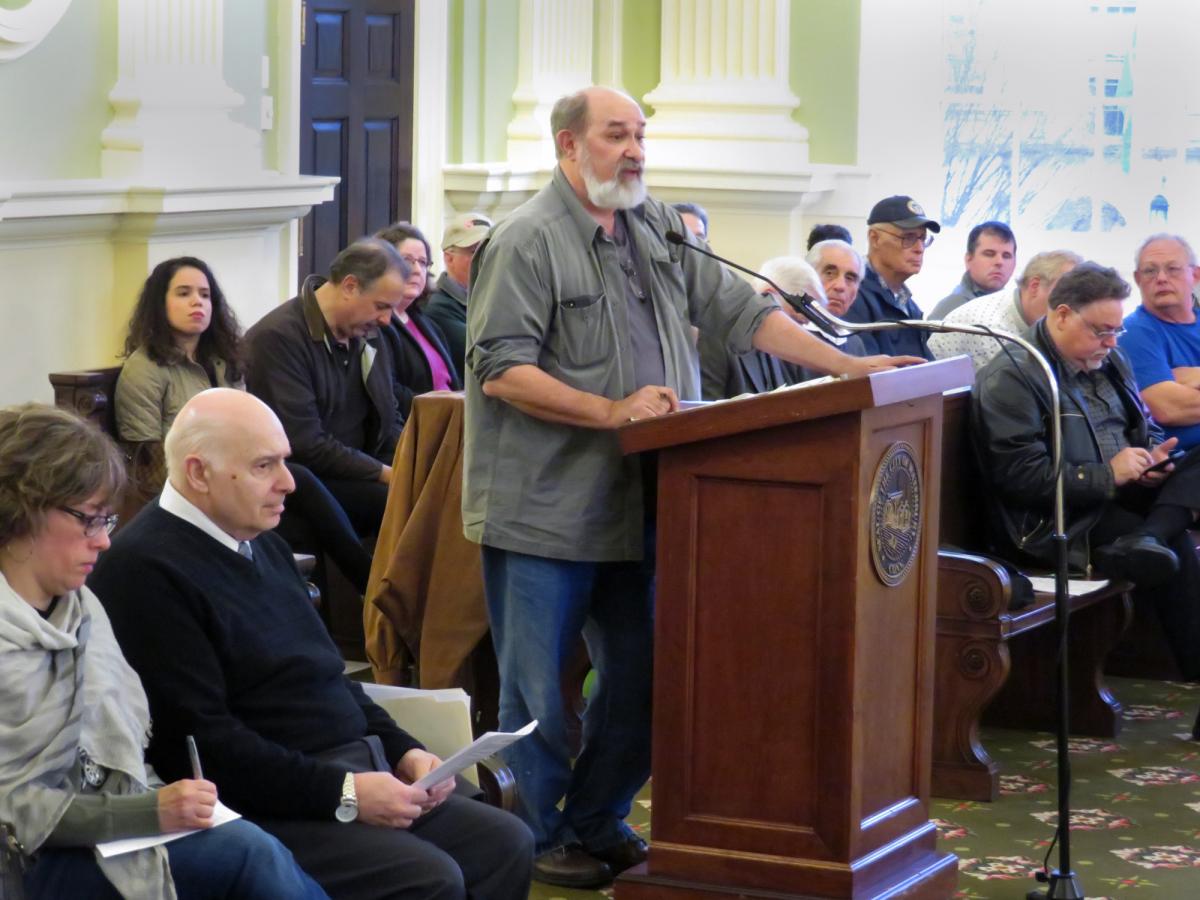
Steve Schrag’s petition is what triggered a DEEP public hearing June 12th.
That would have been the end of the process, but Steve Schrag collected 25 signatures and petitioned DEEP to hold a public hearing on the permit, and the community was back in the conversation. The truck and odor issues have already been resolved and sources inside DEEP said the permit is 99.9% done, and the public hearing is not much more than a legal formality. The permit would be granted unless something new and unexpected came up.
It has.
Environmental justice has not been done.
Edith Pestana from DEEP said there has never been a permit denied because of environmental justice, but said this was the first time since the law went into effect in 2009 that anyone was challenging an Environmental Justice Public Participation Plan.
“This is a first,” she said. “The hearing officer might add conditions to the permit, or he could tell F&G to start over and engage the Hispanic community. This will be history.”
Pestana will be attendance at the DEEP public hearing Tuesday night, June 12th and she said, “the hearing is not a place to vent. Bring facts, bring testimony, it can make a difference.”

Geraldo Reyes organized a rally to bring awareness to the Hispanic community.
Geraldo Reyes, Steve Schrag and the Waterbury Neighborhood Council have spent the past two weeks organizing a rally in the South End and recruiting residents to attend the DEEP public hearing. In many ways the fight is no longer simply about garbage transfer station in the South End of the city. The fight now is for increased civic engagement and true environmental justice.
This is a battle for the soul of the city.
(The DEEP public hearing on the F&G permit is at 6 pm, Tuesday June 12th, at Veterans Memorial Hall inside Waterbury City Hall)

